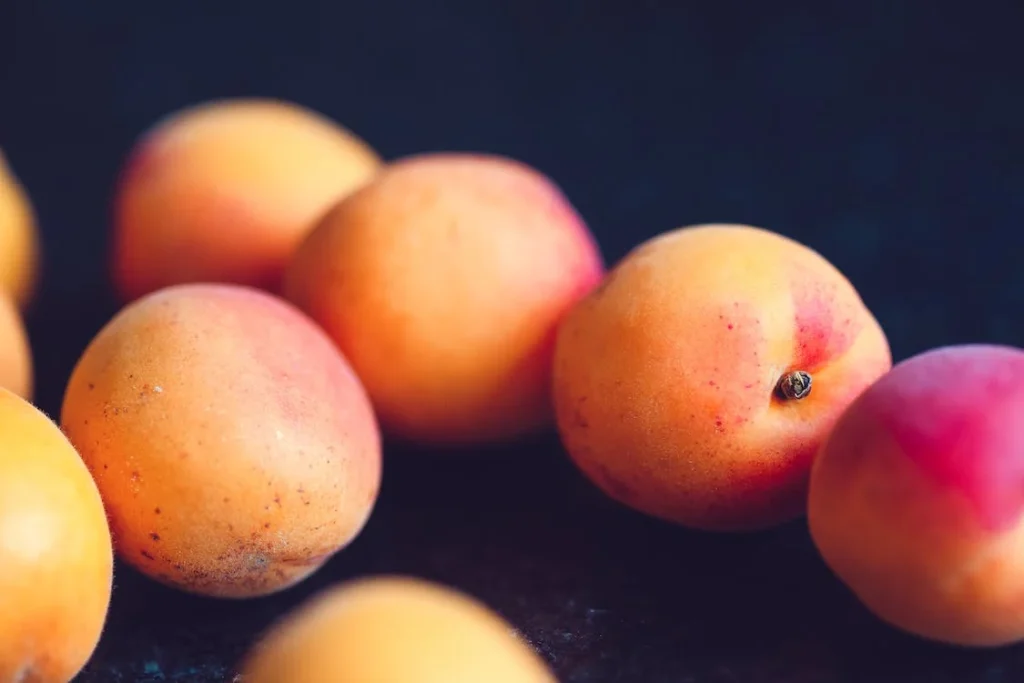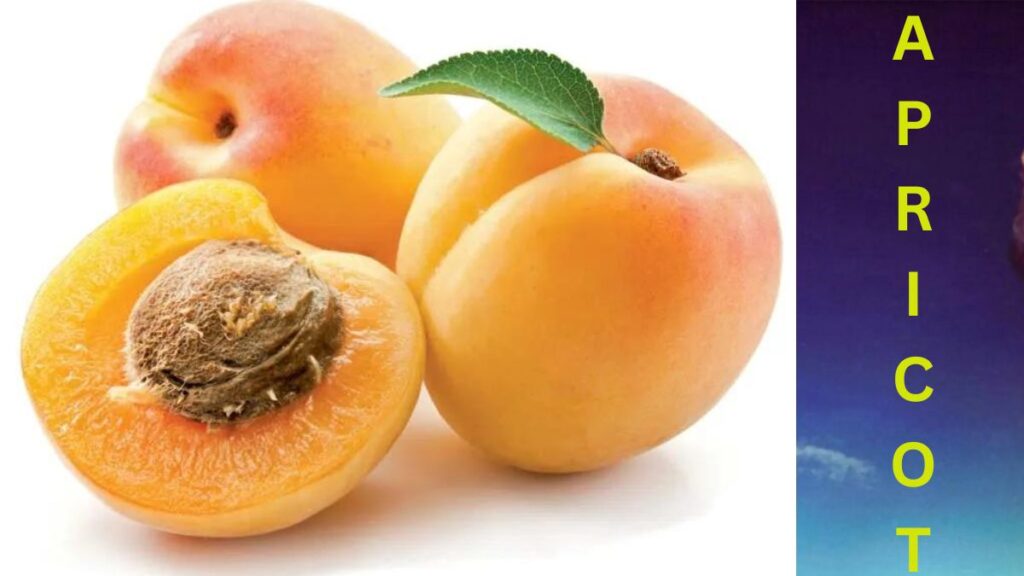Japanese Apricot Astonishing Secrets: You Won’t Believe What This Ornamental Wonder Can Do!”
Nestled within the realms of horticulture, the Japanese apricot (Prunus mume) stands as a petite, decorative fruit-bearing tree. This arboreal wonder delights with its sun-kissed yellow fruit and beguiling pink and white blossoms, enticing our senses with their fragrant allure.
Originating in the lands of China and Korea, this botanical gem has graced our world for over a millennium, bearing testament to a rich history of cultivation spanning 1,500 years. Japan, in particular, has embraced the Japanese apricot with open arms, cultivating an impressive repertoire of approximately 300 distinct varieties.

For those with green thumbs residing in USDA zones 6 to 8, the Japanese apricot beckons as an effortlessly nurtured companion. This elegant tree boasts a gracefully rounded silhouette, standing tall and wide at heights ranging from 15 to 20 feet.
Its leaves, simple and alternate, are ovate in shape, boasting a luscious deep green hue, and measure between 2 to 4 inches in length. Adorned with delicate, aromatic blossoms, the Japanese apricot enchants the observer with its slender, peeling bark, evoking an aura of timeless charm.
But what, precisely, is this captivating tree called? Scientifically christened as Prunus mume, its nomenclature is a graceful fusion of Latin and Japanese influences. “Prunus” harks back to its belonging in the plum family, while “mume” echoes the melodious Japanese pronunciation of its Chinese predecessor’s name. As for its common name, the Japanese apricot takes its moniker from the very land where it was initially cultivated and its kinship with the apricot family.

Now, let us delve deeper into the world of the Japanese apricot’s fruit. These delectable treasures were first introduced to Japan over two millennia ago, coinciding with the advent of wet rice agriculture. Alongside them arrived the flowering Japanese apricots, which mingled harmoniously with their white-blossomed apricot cousins during the Nara period (710-794) in Japan. The Tang Dynasty in China held flowers, including those of the Japanese apricot, in high esteem, particularly within aristocratic circles.
One may wonder if these captivating fruits are fit for consumption. Alas, raw Japanese apricots are not to be trifled with, for they harbor potentially hazardous chemicals. Consumption of these raw fruits is deemed UNSAFE. However, there is a silver lining, as processed fruit products derived from the Japanese apricot are considered safe for consumption.

Intriguingly, Japanese apricots harbor a slew of benefits beyond their aesthetic and culinary appeal. People have traditionally turned to the Japanese apricot for remedies against fever, coughs, stomach and intestinal discomfort, insomnia, menopausal symptoms, cancer prevention, and heart disease mitigation. The Japanese apricot has also been employed for detoxification purposes and to quench thirst. In certain applications, it finds itself directly applied to the skin, providing solace for those suffering from the discomforts of sunburn.
In conclusion, the Japanese apricot, with its rich history, charming aesthetics, and multifaceted utility, stands as a testament to the captivating world of horticulture. It invites us to explore its many facets, from its ornamental grace to its potential health benefits, all while beckoning us to savor its processed fruits with due caution and respect for its raw nature.
How to Use
- Banishing Heartburn: Can Daily Japanese Apricot Consumption Be the Cure?
- H. pylori Woes: Debunking the Myth of Japanese Apricot Juice as a Remedy
- Hepatitis C and Japanese Apricots: A Glimmer of Hope, but Questions Remain
- High Blood Pressure: Does Japanese Apricot Have the Power to Lower It?
- Unraveling the NAFLD Enigma: Japanese Apricots’ Role in a Healthier Liver
SIDE EFFECTS
Navigating the Side Effects of Japanese Apricots: What You Need to Know”
Mouthfuls of Caution: Understanding the Risks and Benefits
- For those savoring dried or pickled Japanese apricots as part of their culinary adventures, rest easy; it’s LIKELY SAFE when consumed in sensible food amounts.
- Exploring the possibilities of an extract derived from dried Japanese apricots? It’s POSSIBLY SAFE for short-term oral use, although some folks may experience minor discomfort like an upset stomach or constipation. In rare instances, allergic reactions could be a concern.
- Beware of the Wild Side: Raw Japanese apricots, however, are a different story. They’re POSSIBLY UNSAFE for consumption due to the presence of potentially harmful chemicals. Your safest bet? Stick to processed fruit products to satisfy your cravings.

Skin-Deep Enigma: The Mystery of Topical Application
- When it comes to applying Japanese apricots directly to your skin, we’re left in the dark. There’s simply not enough reliable information to determine its safety or potential side effects. It’s an uncharted territory that awaits exploration.
So, whether you’re munching on these delightful fruits or contemplating their use in extracts, remember that while the journey can be delectable, a pinch of caution can go a long way in ensuring your well-being.
Precautions
“Unraveling Japanese Apricot’s Precautions and Considerations”
Oral Consumption: A Tread of Cautious Delight
Delight in dried or pickled Japanese apricot as part of your culinary journey, for it is LIKELY SAFE when savored in food-sized portions.
Consider an adventure with an extract of dried Japanese apricot for short-term use; it’s POSSIBLY SAFE, though beware of potential side effects like a queasy stomach or bouts of constipation. In rare instances, allergies might sneak into the picture.
But Beware the Forbidden Fruit: Raw Japanese apricot carries an UNSAFE label due to its toxic chemicals. To savor the essence of apricot safely, opt for processed fruit derivatives.
Skin-Deep Mystery: Awaiting Discovery
As for applying Japanese apricot directly onto your skin, we traverse an enigmatic realm. The reliability of information on safety and potential side effects remains elusive. It’s a territory ripe for exploration.
Caution in Special Situations: Navigating Pregnancy, Diabetes, and Surgery
In the realms of pregnancy and breastfeeding, tread cautiously, for the safety of Japanese apricot in these situations remains shrouded in uncertainty. It’s best to err on the side of caution and avoid its use.
For those navigating the intricate landscape of diabetes, be mindful. Japanese apricot could potentially lower blood sugar levels. Keep a vigilant eye out for signs of low blood sugar (hypoglycemia) and closely monitor your glucose levels when indulging in Japanese apricot.
When surgery looms on the horizon, be forewarned. Japanese apricot might play tricks with blood clotting or blood sugar levels, raising concerns about bleeding risks or disruptions in blood sugar control during and post-surgery. It’s advisable to cease Japanese apricot use at least two weeks before scheduled surgery.
In the captivating world of Japanese apricots, delight and caution must waltz hand in hand to ensure a harmonious experience.
Moderate Interaction
Balancing Act: Japanese Apricot and Blood Clotting Medications
A note of caution is in order when considering the combination of Japanese apricot flower extract with medications that affect blood clotting. Japanese apricot flower extracts possess the potential to slow down the blood clotting process. If you’re already taking medications that have a similar effect, the risk of bruising and bleeding may increase.

These medications include familiar names like aspirin, clopidogrel (Plavix), diclofenac (Voltaren, Cataflam, others), ibuprofen (Advil, Motrin, others), naproxen (Anaprox, Naprosyn, others), dalteparin (Fragmin), enoxaparin (Lovenox), heparin, warfarin (Coumadin), and others.
Blood Sugar Ballet: Japanese Apricot Meets Diabetes Medications
For those managing diabetes, there’s a fascinating interaction to consider. Japanese apricot has the potential to lower blood sugar levels. Simultaneously taking Japanese apricot and diabetes medications, both aimed at regulating blood sugar, may result in excessively low blood sugar levels.
Medications used for diabetes management include glimepiride (Amaryl), glyburide (DiaBeta, Glynase PresTab, Micronase), insulin, pioglitazone (Actos), rosiglitazone (Avandia), chlorpropamide (Diabinese), glipizide (Glucotrol), tolbutamide (Orinase), and others.
As you explore the intriguing world of Japanese apricots and their potential interactions, it’s essential to strike a delicate balance between caution and the exciting possibilities they may offer. Always consult with your healthcare provider to ensure your safety and well-being in these interactions.
Dosing
Finding Your Fit: The Quest for the Right Japanese Apricot Dosage
Unraveling the perfect dose of Japanese apricot is akin to solving a complex puzzle, as it hinges on diverse factors like your age, overall health, and specific individual conditions. As of now, the scientific landscape lacks sufficient data to pinpoint a one-size-fits-all dose range for Japanese apricot.
It’s crucial to recognize that, in the realm of natural products, assumptions about safety can be misleading, and the right dosage holds significant importance. To navigate this terrain wisely, always adhere to the instructions provided on product labels. Additionally, consult a trusted pharmacist, physician, or healthcare professional to tailor your Japanese apricot usage to your unique needs.

In your quest for the ideal Japanese apricot dosage, remember that customization and professional guidance are the keys to unlocking its full potential while ensuring your well-being.
To know more about Apricot Please click Here
You may like :
Apricots, with their sweet and slightly tart flavor, can be a delightful addition to various recipes, both savory and sweet. Here are some ideas on how to use apricots in your culinary creations:
- Fresh Snacking:
- Enjoy fresh apricots as a healthy and satisfying snack on their own.
- Slice them and add to a fruit salad for a burst of natural sweetness.
- Smoothies:
- Blend fresh or dried apricots into smoothies for a sweet and nutritious twist.
- Combine with yogurt, banana, and a splash of almond milk for a refreshing beverage.
- Preserves and Jams:
- Make homemade apricot preserves or jams to spread on toast, muffins, or scones.
- Combine apricots with sugar and lemon juice in a saucepan, simmer until thickened, and store in jars.
- Salads:
- Toss fresh apricot slices into green salads for a sweet and juicy element.
- Combine with arugula, feta cheese, and a light vinaigrette for a flavorful salad.
- Grilled Apricots:
- Halve fresh apricots and grill them for a delicious dessert or side dish.
- Serve grilled apricots with a drizzle of honey and a sprinkle of cinnamon.
- Apricot Glaze for Meat:
- Create a glaze by pureeing apricots and combining with honey or balsamic vinegar.
- Brush the glaze on grilled or roasted meats, such as chicken or pork, for added flavor.
- Baking:
- Incorporate chopped dried apricots into muffins, cookies, or bread for a chewy and sweet texture.
- Make apricot-filled pastries or tarts for a delightful dessert.
- Sauces and Chutneys:
- Prepare a savory apricot sauce by combining apricots with garlic, ginger, and soy sauce for a glaze on poultry or fish.
- Create a spiced apricot chutney to accompany grilled meats or cheese platters.
- Apricot Ice Cream:
- Make homemade apricot ice cream by blending pureed apricots with cream, sugar, and vanilla.
- Fold in chopped fresh or dried apricot pieces for added texture.
- Cocktails and Mocktails:
- Muddle fresh apricots in cocktails for a fruity and aromatic twist.
- Create a refreshing apricot mocktail by combining apricot puree with sparkling water and a splash of citrus juice.
- Apricot Salsa:
- Dice fresh apricots and mix with red onion, cilantro, lime juice, and a touch of jalapeño for a flavorful salsa.
- Serve the apricot salsa with grilled fish or as a topping for tacos.

Experimenting with apricots in various recipes allows you to appreciate their versatile and delicious nature. Whether you prefer them fresh, grilled, or incorporated into sauces, apricots can elevate both sweet and savory dishes with their unique flavor profile.






